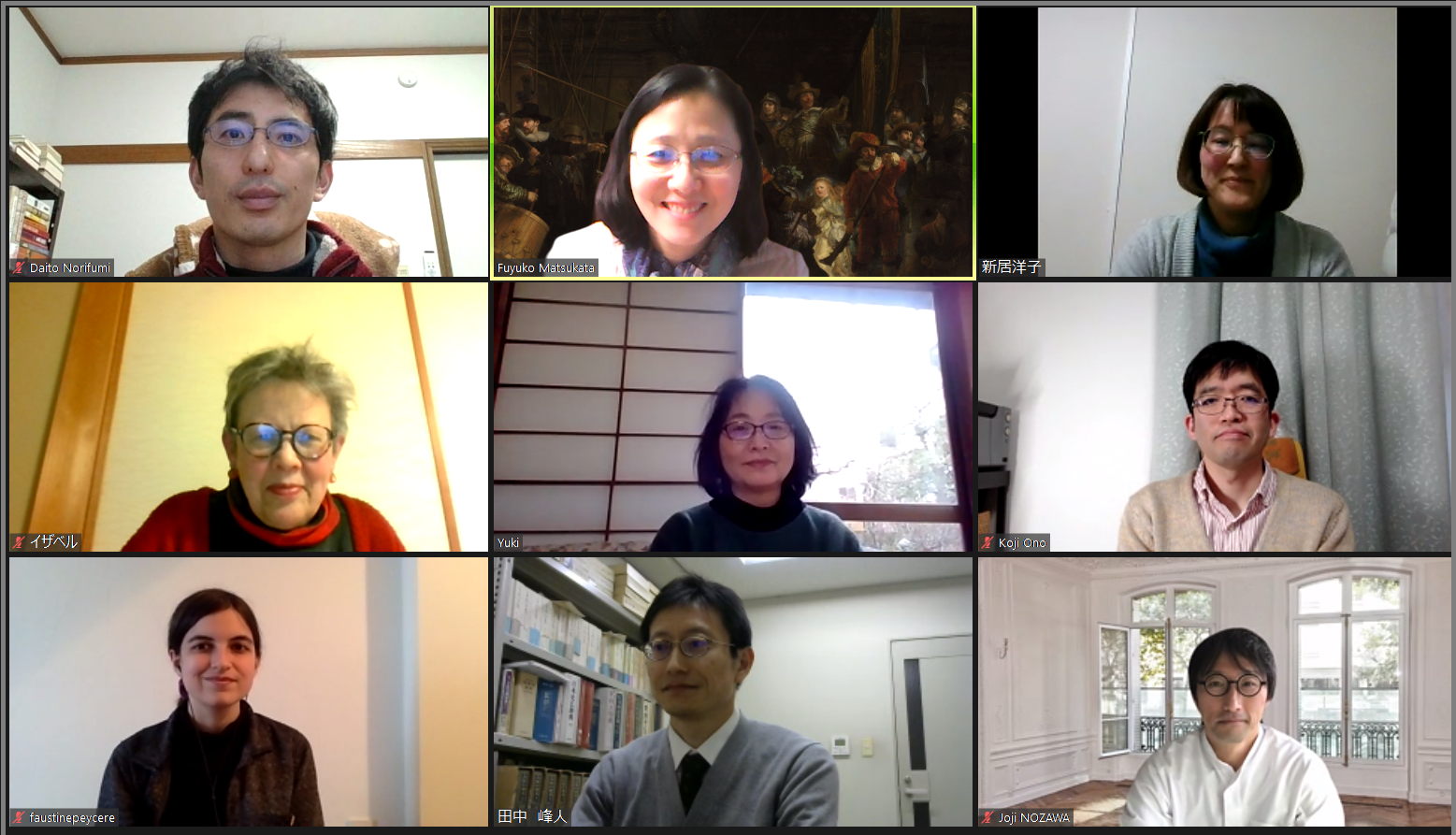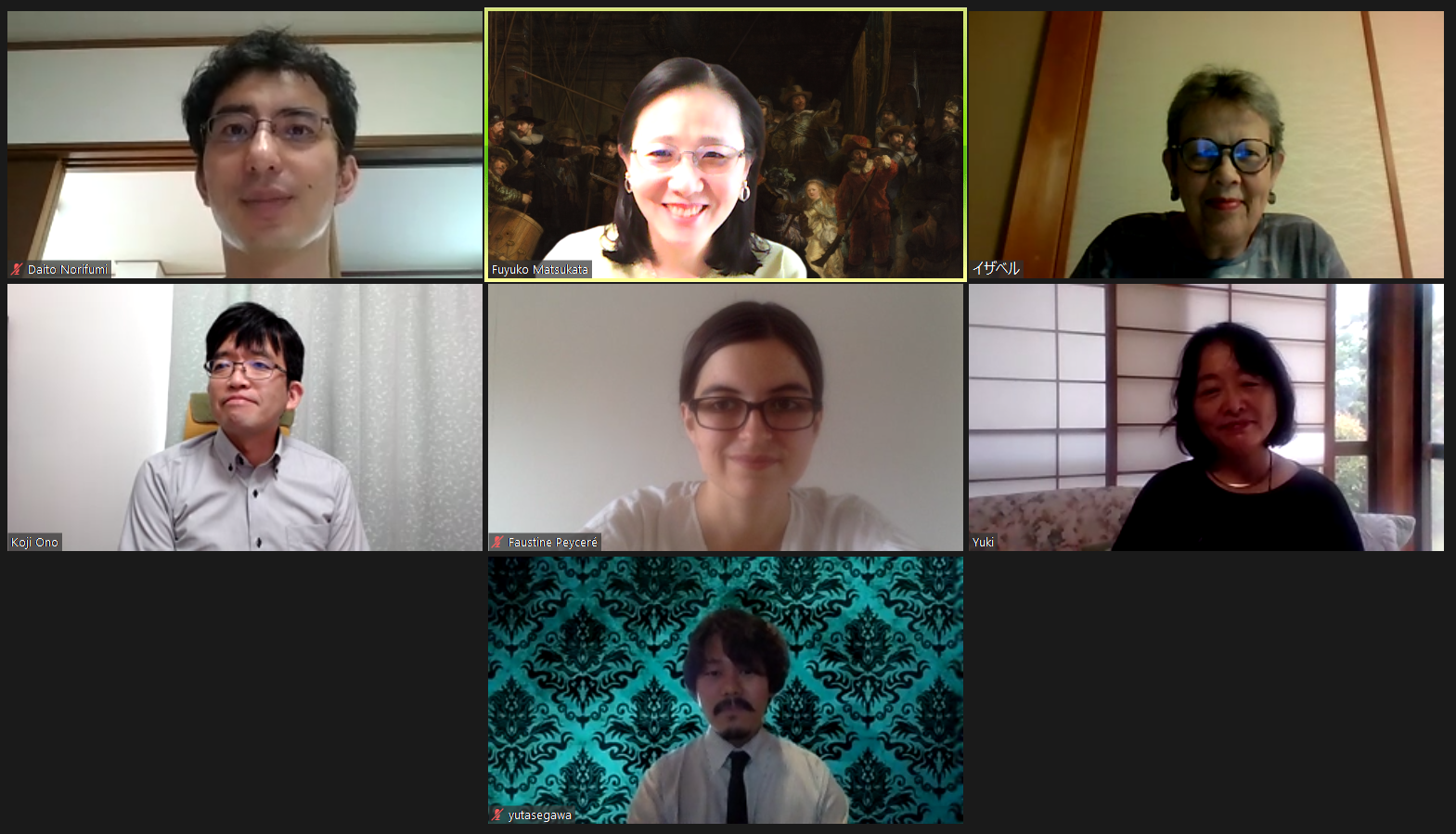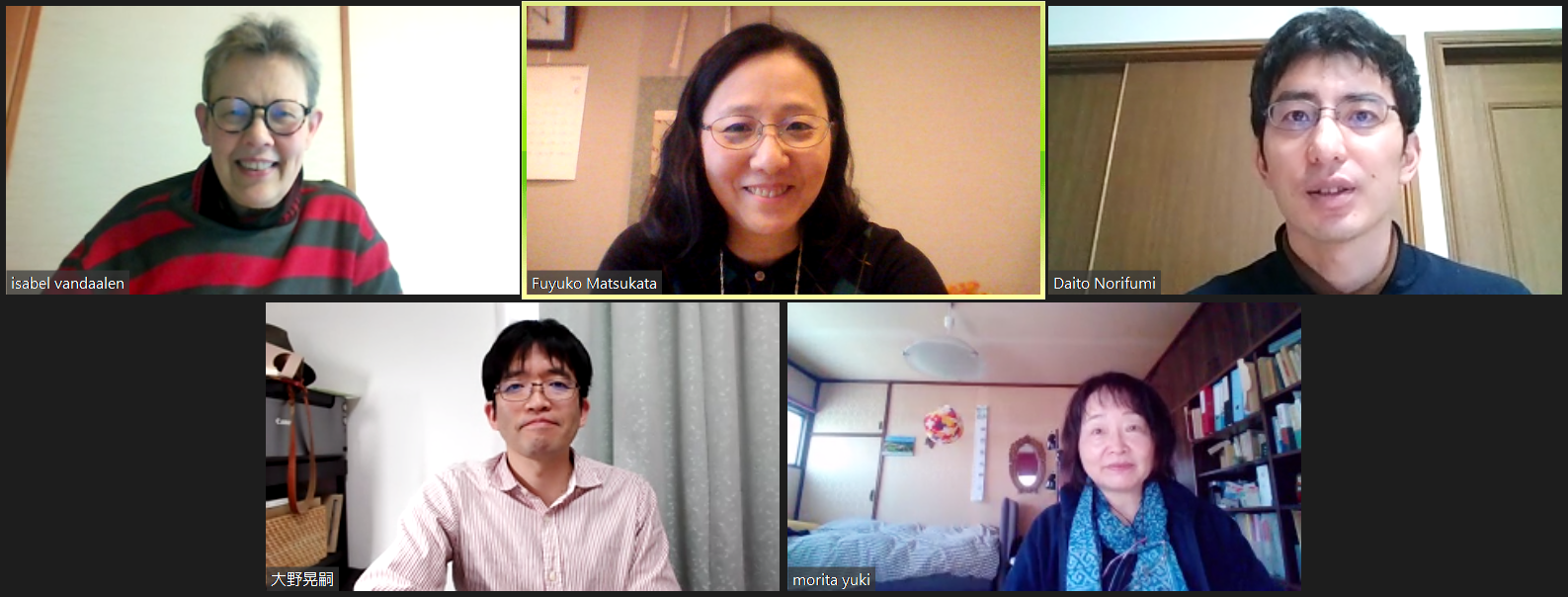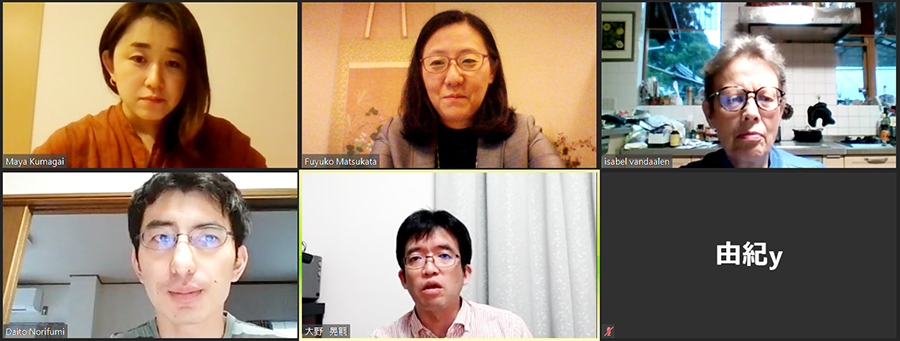Translation and Research of the journal of a Dutch East Asia Company Envoy to Qing in 18th Century
Activity Report
28 APR 2022
Major participants in this meeting were the “Dutch language team” (Daito, Matsukata, Morita, and Tanaka-van Daalen), but the “French language team” (Nozawa and Peyceré) also participated as observers. We translated pages 68 to 77 of the journal of Titsingh (published by Frank Lequin), and also shared ideas how the Dutch and French teams can work together.
From the academic year 2022, we will conduct this project as one of the Specific Joint Research Projects of the Historiographical Institute (HI) “Translation and Research for Enhancing the Availability to the Japan-Related Foreign Historical Sources Preserved in the HI” (Monsoon II Project for AY2022 to AY2025)
22 MAR 2022
The “Dutch language team” discussed how to move forward with the project.
4 MAR 2022 Fourth online workshop
The project welcomed Joji Nozawa as a new member. For this workshop, we also invited Mineto Tanaka and Yoko Nii. The program of the workshop was as below.
Yoko Nii, “Jean Joseph de Grammont (1736–1812), a Jesuit missionary in China.”
Norifumi Daito, “Book review of Tonio Andrade, The Last Embassy: The Dutch Mission of 1795 and the Forgotten History of Western Encounters With China (Princeton: Princeton University Press, 2021).”

(Participant’s note)
Nii made a presentation about Jean Joseph de Grammont, who was a Jesuit missionary in China. Nii pointed out that the translation of “康熙遺詔” (The Kangxi Emperor’s Last Will Testament) by the French missionary Grammont (1736-1812) who also featured in the journal of Titsingh, stands out among all the translations of the Will in terms of the timing, details, the route through which it reached Europe, and the fact that it was published in an academic journal. While comparing Grammont’s translation with other translations, Nii also spoke on how Jesuit missionaries in China were dispatching information at that time and how it was spread. Moreover, through the introduction of the profile of Grammont, she described the environment surrounding Jesuit missionaries in China at that time. Nii showed many interesting facts regarding Grammont’s translation, including arguments made on liturgy within the Society of Jesus as background for the translation, the impact of the collapse of the Society, issues related to “state and the religious sense of belonging,” and the fact that Grammont seldom appeared in the materials created by the Qing dynasty. She also indicated the fact that when the French fleet under the Chevalier d’Entrecasteaux arrived in China, Grammont worked as a translator in cooperation with Joseph de Guignes. The participants subsequently had an active discussion about the fact that French missionaries were dispatching information more earnestly than other missionaries in China at that time, the position of the French language as a lingua franca in the Western World, and the rise of Sinology in France led by Jean-Pierre Abel-Remusat.
Daito reviewed Tonio Andrade’s recently published book The Last Embassy with a focus on the introduction and the concluding sections of the book. In his book, Andrade challenged the conventional ideas that the Macartney Embassy was a failure due to the collision between Oriental and Western cultures, and that the Titsingh Embassy was also a failure as it achieved nothing except for meeting the requests made by the Chinese side. The author stressed the need to rethink the frameworks that had been supporting the concept of diplomacy, including Sinocentrism, the tributary system, and modern Western diplomatic models. Andrade stated that the Titsingh Embassy aimed to carry out “phatic” diplomacy as it was sent to China to celebrate the 60 years of Qianlong Emperor’s resign and foster mutual exchange, and in this regard the Embassy was successful.
Daito presented an overview of the diplomacy of the Dutch East India Company in light of diplomatic documents created by them, especially Dutch-language contracts with Asian rulers. He also pointed out limitations to utilize the sources for historical inquiry. Moreover, he referred to Sanjay Subrahmanyam’s book Courtly Encounters on diplomacy in early modern Eurasia, and questioned the traditional idea about diplomacy that excessively emphasizes cultural differences. Following Subrahmanyam’s argument on “commensurability”,. Daito compared a Persian royal edict issued by the Safavid king and its Dutch translation to show a remarkable degree of adjustment achieved between the texts. Discussion followed on the tributary system, the “互市” (hushi) system, etc. Matsukata commented that the Qing dynasty valued “letters” more than “diplomats” in its diplomatic activities.
17 SEP 2021 Third online workshop
Yuta Segawa and Faustine Peyceré joined the workshop. The event was as below.
Koji Ono, “The Eight Banners and Green Standard Army under the Qing dynasty: For a better understanding of the journal of Titsingh.”
Translation: pages 119 to 126 (January 11 to 14, 1795) of the journal of Titsingh

(Participant’s note)
When one conducts research, as well as in daily life, one tends to try to understand other people, other regions, other ethnic groups and other nations basing oneself on the customs prevailing in one’s own region and country. However, this can result in misunderstanding. The workshop provided me with an opportunity to recognize the importance of taking a broader view to prevent such misunderstanding. It is necessary to doubt and carefully examine what you take for granted and what is believed to be a perfect theory, thinking instead that it might be a delusion.
In the workshop, Ono explained that there were ongoing arguments about whether or not the Eight Banners and Green Standard organizations were armed forces and whether they were centralized or decentralized entities.
For discussions on the Dutch translation, we have a range of researchers specializing in different fields among us, which makes it possible to free ourselves from erroneous beliefs, mistranslations and incomplete translations.
This research group does not have a pyramid-like structure. Participants have different backgrounds. Their research themes and educational and career backgrounds are diverse, and the proportion of men and women happens to be almost the same. Also, they belong to various age groups.
What will happen if we hoist a flag for the project? It might help us unite more strongly, even though what it stands for is unclear. However, it might damage the atmosphere of the project for which people working or conducting research on Eurasia and Japan gather to form a loosely knit group. Although I feel sorry to not be able to see our flag waving in the monsoon wind, it would be better for us not to hoist a flag so that we can continue as a group in which members can have different opinions and discuss on an equal footing without sontaku (acting upon the implicit desires of others).
27 MAR 2021 second online workshop
(Participant’s note)
While face-to-face workshops are restricted due to the Covid-19 pandemic, we have been working on improving the accuracy of translations by having each of us add modifications or questions to the draft translation prepared by Ms. Morita.
In this workshop, we polished the translation of “Titsingh’s letter to Nederburgh on 26.11.1794” together. We discussed the basic principle of translation in depth, such as how many demonstratives should be preserved as is, or more specific issues of how to phrase the nuances of Dutch sentences missing a subject in Japanese. It was truly inspiring to see Prof. Matsukata, Prof. Daito, Ms. Van Daalen and Ms. Morita who can read Dutch documents freely, progressing in the translation while selecting the words carefully. I personally am struggling to come up with an appropriate Japanese word for the frequently used word “Sjap”.
We can find in “Daicing gurun iuheri kooli bithe(大清會典)” that the Governors and 巡撫 (Grand coordinator and provisional governor) often used “龍牌”, the dragon tablet in courtesy on the “Emperor’s half”, but considering the fact that the term is frequently used in the journal, I do feel that my knowledge is far from being enough including etymological issues. Understanding the true figure of courtesy is always the biggest challenge to those who study Chinese history and there is no doubt that Titsingh depicted the courtesies, big and small, with great interest, so this will definitely be a key that adds color to the translation. I want to work on the translation with better understanding.
This turned out to be a day’s work. Although we could only interact with each other through the computer screen, I felt that our almost-face-to-face debates were very productive and essential to this kind of work. We could discuss the actual preparation that should be done on translation data to use our limited time more efficiently because we need to do our work in this same manner as long as the pandemic continues. It was an important advantage of this workshop. I want to progress a step at a time towards our primary target of publishing the translation.

25 SEP 2020 1st online workshop held. The lineup as follows
Koji Ono (Tohoku University): Bureaucracy in Qing dynasty – Titsingh’s journal
and Qianlong’s reign
Maya Kumagai (Researcher at Nihon University): Documents of Macartney Embassy
Presentation of the knowledge of Chinese history required to understand the journal of the Titsingh Embassy, and the documents of the British Macartney Embassy, which was sent to China one year prior to the Titsingh Embassy. It was a simple and clear presentation easily understood even by those who do not specialize in this field. I am sure this will contribute a lot to the upcoming translation.

(本ページの無断転載を禁止します。)











